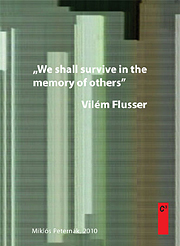In Germany, find out the proper procedure and follow it exactly, and everything will work very smoothly. Everyone should be 'konsequent' (there is no direct translation, but it means something between considerate (of the consequences of your actions, i.e. do unto others... )and consistent, and everything should be 'gerecht' (fair, just, correct). Yet there is always space for dissent and even anti-sociality and difference.
The city is bankrupt and has been for a long time and is searching in the most efficient way possible to find a raison-d'etre in this world where the action is gradually shifting east and south.
This may be one of the reasons that the streets of Berlin have become such vibrant spaces of autonomous expression.

Anarchism has a strong tradition in Berlin, the current phase of which originated in the 'special status' laws from during the divided Berlin period which attracted thousands of German pacifists to the city in the 70s and 80s (compulsory military service was waived for residents of Berlin).

The 'Coming Insurrectionists' have come to Berlin. They are uncontrobable, they are so uncontrobable the sheer power of the insurrection is like a tidal wave crushing semantic conventions. UNCONTROBABLE! yes that is exactly what you are!
 Someone, perhaps the same 'Coming Insurrectionists' launched a big messy splat on the cooly low-res-graphicked exterior of our new 'Temporary Art Hall'. This swinging splash is an exquisitely inarticulate oath. The Temporary Art Hall represents all that is bad and good in Berlin's contemporary art scene. Good, there is relatively a lot of money for new art, and the funding agencies are willing to try new and daring institutional concepts, bad, once the funding has been secured the same old power plays and in-group mentality stymie anything really exciting from taking place. The current show is so inauspicious they have had to drop all admission charges. With the trend towards privatization of all public services, art institutions increasingly have to compete with Reality TV.
Someone, perhaps the same 'Coming Insurrectionists' launched a big messy splat on the cooly low-res-graphicked exterior of our new 'Temporary Art Hall'. This swinging splash is an exquisitely inarticulate oath. The Temporary Art Hall represents all that is bad and good in Berlin's contemporary art scene. Good, there is relatively a lot of money for new art, and the funding agencies are willing to try new and daring institutional concepts, bad, once the funding has been secured the same old power plays and in-group mentality stymie anything really exciting from taking place. The current show is so inauspicious they have had to drop all admission charges. With the trend towards privatization of all public services, art institutions increasingly have to compete with Reality TV.

Turning around 180 degrees, and what do we see?

an empty field with the TV tower in the distance? What is the name of this place? This is the site of two willful demolitions. In 1950, 5 years after World War II and 1 year after the capital of West Berlin was established at Bonn, the communist authorities tore down the slightly damaged Stadtschloss (City Palace) which for 500 years had been the symbolic of seat power in the region.
In its place they erected the 'Palast der Republik" (Palace of the Republic), one of the the most successful public buildings of the GDR, popular with East Berliners for it's bowling alleys, dance halls, as well as being the location of the parliament and administrative functions such as issuing marriage licenses. The Palast der Republik became a strong symbol of what was positive in the social experiment of East Germany.
The Palace was shut down in 1990 amid claims that asbestos had been found in the construction.
Some groups appeared to lobby for the reconstruction of the City Palace. in 2007, it was decided that the City Palace would be rebuilt in Italian Renaissance style.
On the site, today, awaiting the start of construction, the city has created a veritable tabula rasa. Neat swaths of green with tidy wooden walkways and not the slightest trace of the Palast der Republik. For me, it is ironic that the City which is so concerned with facing and preserving it's past should treat the memories of half of its citizens with such evident antipathy. Berliners are by no means unanimous in their support for the 'City Castle' project, and, due to the current financial strictures, the project seems to be going into storage mode.

 This reminds me of the peculiarity in German, retrieved from Nietzsche by Derrida in Specters of Marx (p. 30) between the homonyms gerechte (correct, fair, just (see above)) and gerächte (avenged).
This reminds me of the peculiarity in German, retrieved from Nietzsche by Derrida in Specters of Marx (p. 30) between the homonyms gerechte (correct, fair, just (see above)) and gerächte (avenged).In the GDR, Berlin, city of Hitler, was re-baptised "Berlin Stadt des Friedens" (Berlin, city of peace). The slogan, accompanied with the customary dove, once emblazoned across the socialist capital, is been progressively removed during the 20 years since reunification. Evidently, city leaders would prefer to see the history of East Berlin as an exceptionally forgettable error. Soon, apparently, Berlin will retrieve an earlier identity: symbolic center of imperial Germany.













"...between the homonyms gerechte (correct, fair, just...) and gerächte (avenged)..."
ReplyDeleteIe, the German version of Karma.
Luvly piece, btw!
ReplyDelete